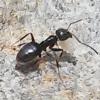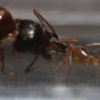Hello everyone, I'd like to share my idea about a formicarium I'm planning to make and ask you some tips.
I'm planning on building a (grout?) formicarium with a resistor inside it so that it will be warmer, as my home is really cold and ants would develop slowly. I think it will turn out great!
My original plan was to have a small temperature and humidity sensor in order to know what's up inside the nest and a dimmer to regulate how much heat the resistor is producing. Manual balance. However, I thought that if I'm leaving home for a few days and I can't check the temperature the ants may overheat and die. Is this likely to happen? I mean, if the resistor keeps the nest at let's say +4°C over ambient temperature and the latter rises a bit, for example going up from 20 to 22°C (and therefore the formicarium will go form 24 to 26°C), will the ants suffer in any way?
Another option would be to put some Arduino sensors inside the nest and self-regulate the temperature so it'll work fine by itself without fine-tuning the power input. Is it worth the cost? Or should I just put a resistor and let the nest temperature fluctuate a bit?
Leave me your thoughts about my project, I'll update and share the results with you as soon as I get going!
















